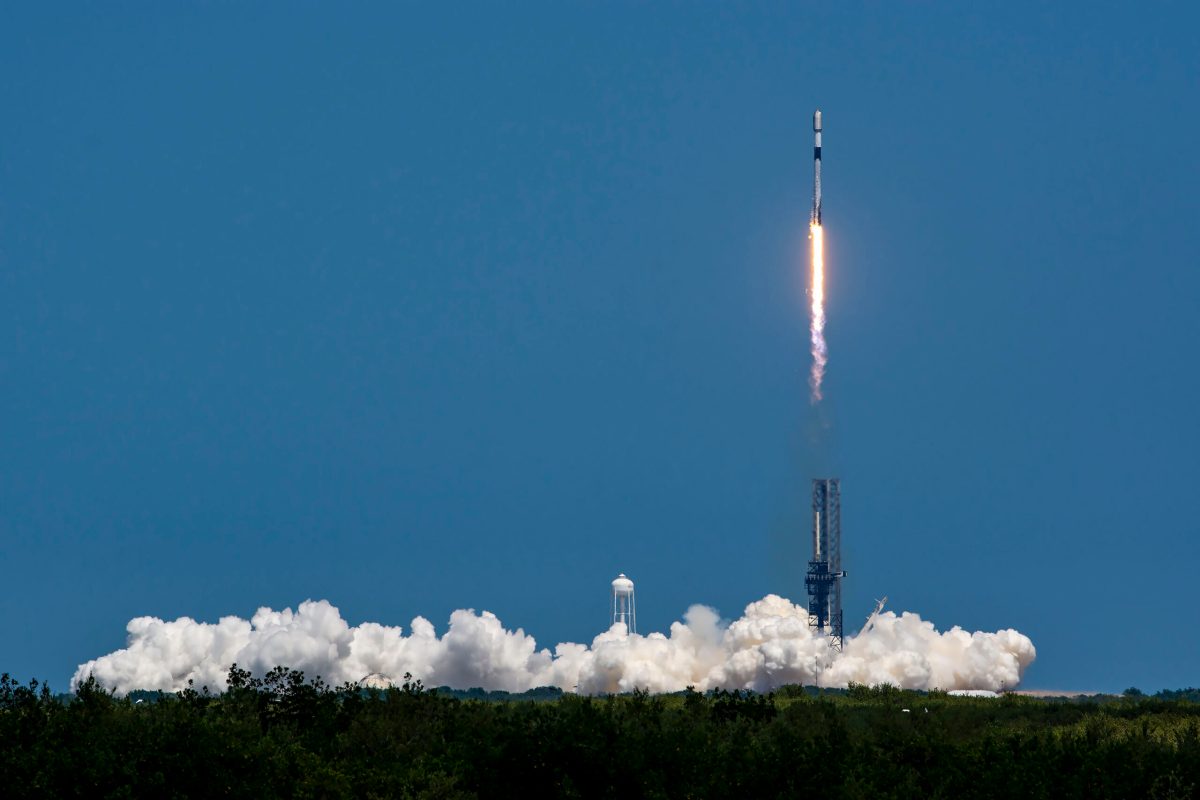WASHINGTON — SpaceX’s ambitious Starlink satellite network is exceeding expectations at a blistering pace, according to a new report by Quilty Space, a market research and consulting firm.
The report, discussed by Quilty Space analysts on a webinar May 9, forecasts Starlink is on track to generate a staggering $6.6 billion in revenue for 2024, defying industry skepticism and rewriting the future of satellite internet.
“Back in 2015, when SpaceX and OneWeb announced these mega-constellations, many industry veterans scoffed,” said Chris Quilty, founder of Quilty Space. “They remembered past satellite broadband ventures failing in the 1990s.” Industry watchers expected Starlink to make a mark, but not to this degree, he noted.
SpaceX in May 2019 launched the first 60 Starlink satellites on the company’s Falcon 9 rocket.
Fast forward to today, and Starlink boasts a constellation of nearly 6,000 satellites, with over 5,200 operational and beaming internet access to 2.7 million subscribers across 75 countries. SpaceX is a private company and Starlink’s financials are not publicly available. The company’s rapid growth prompted Quilty Space to delve deeper into what is driving Starlink’s performance.
“Starlink’s achievements over the past three years are mind-blowing,” said Quilty. “We’re projecting a revenue jump from $1.4 billion in 2022 to $6.6 billion in 2024.”
To put that in perspective, the combined revenue of the two largest geostationary satellite operators, SES and Intelsat, which recently announced a merger, is around $4.1 billion.
How Starlink achieved explosive growth
“The answer lies in their subscriber base,” explained Quilty. Viasat and Hughes, two dominant players in the consumer GEO satellite internet market for over 20 years, peaked at a combined 2.2 million subscribers in 2020. Starlink surpassed that number in just a few years, he said.
The financial outlook is equally impressive. Quilty Space estimates Starlink’s EBITDA (earnings before interest, taxes,depreciation, and amortization) to reach $3.8 billion in 2024, a significant leap from negative $128 million in 2022.”We expect Starlink to achieve positive free cash flow for the first time in 2024,” said Quilty.
Starlink’s success also is attributed to its traction in wealthier countries with customers willing to pay a premium, said Justin Cadman, co-chief executive of Quilty Space. For now, it’s a “rich world service” catering to middle and upper-income markets, not necessarily bridging the digital divide, he noted
Quilty estimates Starlink’s current subscriber base includes roughly 50,000 mobility, enterprise, and government users,excluding those supporting Ukraine. “The initial focus on direct-to-consumer sales allowed Starlink to scale rapidly,” said Quilty. “Now, they’re expanding into enterprise, mobility, and government markets.”
Cost advantage in manufacturing
Another factor behind Starlink’s financial success lies in SpaceX’s mastery of satellite manufacturing, according to Caleb Henry, director of research at Quilty Space.
“Starlink has been able to do an incredible job at keeping the spacecraft costs lower than basically any industry precedent,” said Henry.
Quilty Space estimates the cost of Starlink satellites has evolved significantly. While the first generation V1 satellites were produced for around $200,000 each, the latest V2 mini version carries a heftier price tag of $800,000, but that reflects its increased size and capabilities (from 260 kilograms to 730 kilograms).
Looking ahead, Quilty projects the future V3 satellite will weigh in at a substantial 1,500 kilograms and cost roughly $1.2 million.
So how has SpaceX achieved this cost advantage? Henry points to two major factors: aggressive vertical integration and high-volume production.
“By controlling a large portion of the manufacturing process in-house,” explained Henry, “SpaceX avoids profit margins typically added by external suppliers, keeping costs down.” Additionally, SpaceX has established an unprecedented production cadence, churning out satellites at a rate unseen before in the industry.
This focus on efficiency comes with trade-offs. As Henry highlights, “the spacecraft have gotten more powerful to handle increased capacity and data rates, but that comes with an increased power burden that translates to higher cost and mass.”
Quilty Space estimates that roughly 3,000 of SpaceX’s 13,000 employees are dedicated to Starlink.
Henry predicts that if SpaceX’s next-generation Starship rocket becomes operational for Starlink deployments by 2025, “they might jump straight to launching the V3 version of their satellites.”
